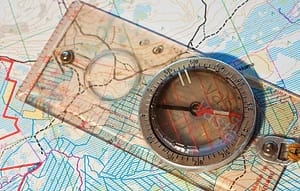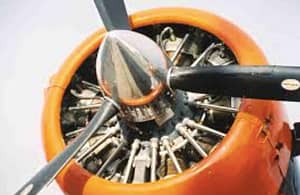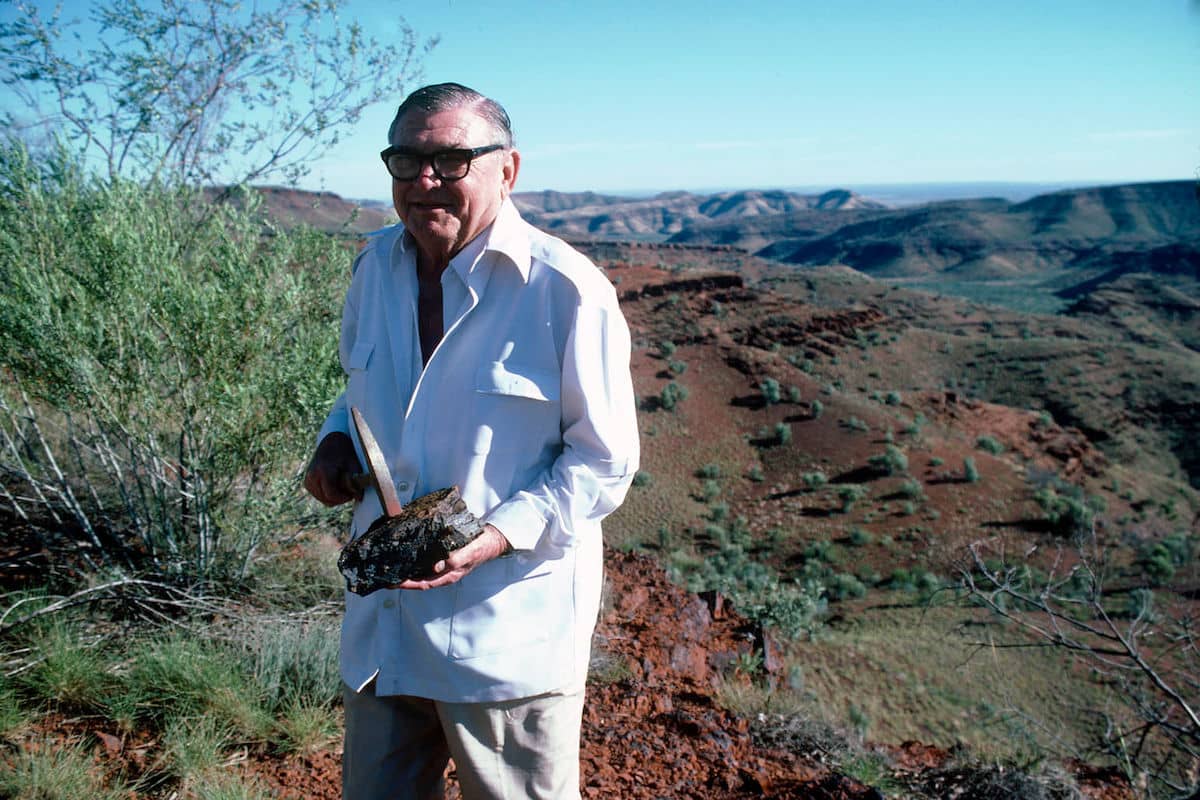Lang Hancock will always be a legend and an icon of Australia. In 1963, he saved my life. I doubt he even realised. I didn’t know him at the time and it was years later that I eventually met him in person.
Lang Hancock — better than any map
Two mates and I were selling some mining equipment. We needed to get from Kalgoorlie to a copper mine at Thaduna, way up north, somewhere between Meekathara and Darwin. We then wanted to call into Wittenoom to look at the asbestos mine there.
The first thing we did was get a map. It was too far to drive in a couple of days so we hired an aircraft. The plane’s owner looked at the three of us and said, “Do any of you know what you’re doing?” One of us had a pilot’s licence and I said, “That’s okay, he can fly the thing and I’ve just bought a new map, so we’ll be okay.”
 We found Thaduna no trouble at all. We had a good tour of the mine. Rod Fletcher and Malcolm Scott were running it at the time. They were mining copper and concentrating it on-site before shipping it off to Japan in 44-gallon drums. Pioneering stuffback then in 1963. We finished the tour and asked, “Now, how do we get to Wittenoom from here?” “Well that’s easy,” Rod said. “You just need to go west and look out for Mt Bruce, it’s the highest mountain in the State. Once you get to Mt Bruce, just circle around in ever increasing circles and you can’t miss Wittenoom.”
We found Thaduna no trouble at all. We had a good tour of the mine. Rod Fletcher and Malcolm Scott were running it at the time. They were mining copper and concentrating it on-site before shipping it off to Japan in 44-gallon drums. Pioneering stuffback then in 1963. We finished the tour and asked, “Now, how do we get to Wittenoom from here?” “Well that’s easy,” Rod said. “You just need to go west and look out for Mt Bruce, it’s the highest mountain in the State. Once you get to Mt Bruce, just circle around in ever increasing circles and you can’t miss Wittenoom.”
A few hours later we saw a couple of high mountains on the horizon. We had a guessing game about which was the highest of the two and the decision was unanimous. However, we picked the wrong one. We got there, circled around and around in increasing circles, but there was no sign of anything. Nothing at all. We did this for a couple of hours and then we heard the plane’s engine go “cough, cough”. “Well,” we said, “at least the fuel gauge is working ok”.
We turned the radio on and got the Department of Civil Aviation (DCA). (I think it’s changed its name since then). The fellow we spoke to said the best thing to do was to try and land somewhere, taking note of any landmarks. We looked out the window and saw we were hopelessly lost in the middle of the Hamersley Ranges. It was rugged stuff.
We landed and re-established contact by radio. It was getting dark so they said to light a fire. So, we lit a fire. Within minutes we had about a thousand hectares of burning spinifex. We reckoned this would be clearly visible from the moon. At the least, any planes in the southern hemisphere were bound to see us. (In fact, they did. Many reported seeing a serious fire, but they didn’t fly close enough to see us.)
 We described what we could see to the radio fellow and he said, “Look, there’s only one person in Western Australia that can really give us any idea as to where you may be, so what we’ll do is put you on hold and ring him.” Mr Hancock was not at home at the time. However, a lady answered the phone and said he was at the movies. We were asked by the DCA person to get back to them at 11 pm on the dot. To conserve the battery on the radio, we had to contact them every two hours before then. Well, we had no other plans for the night!
We described what we could see to the radio fellow and he said, “Look, there’s only one person in Western Australia that can really give us any idea as to where you may be, so what we’ll do is put you on hold and ring him.” Mr Hancock was not at home at the time. However, a lady answered the phone and said he was at the movies. We were asked by the DCA person to get back to them at 11 pm on the dot. To conserve the battery on the radio, we had to contact them every two hours before then. Well, we had no other plans for the night!
Turns out we were on Lang’s old airstrip. He said, “I don’t know how you got down there. If you want to take off tomorrow, whatever you do, clear a few trees out of the way, because the strip is in pretty bad shape.” Lang told the DCA exactly where we were. They arranged for the Royal Flying Doctor Service to come out the next morning. We had no jerrycan for the fuel so used the doctor’s little stainless steel urinal. You know, the one with the handle you see in hospitals. It took half a day to transfer enough fuel across to get us to Wittenoom.
I have a very clear memory of that night which we spent, lost in the Pilbara, huddled around that campfire. One of us commented, “Isn’t it remarkable, that in a state of this size, there’s only one person who knows where things are up here in the Pilbara?”
We were lucky.
Meeting Lang Hancock
About seven years later was a nickel boom happening in Kalgoorlie, which took me out of the country a bit. Anytime people discovered I was from Western Australia, they’d say, “Oh, you must know Lang Hancock.” I was very embarrassed and I said, “No, I don’t.” They’d say, “But you must.” They assumed there were only about ten people in Western Australia.
I put up with this for a few years. One day I rang Lang from Kalgoorlie and said, “Mr Hancock, I’d like to meet you.” He said, “Why?” I couldn’t tell him the truth, so I said, “We may have some things in common, I’d like to meet you so we can discuss them.”
He said he would give me 10 minutes. I jumped on a plane and there I was. Well, I remember walking out of his office five hours later. We found out that we did have a lot in common. I think it must have been something to do with Milton Friedman, his favourite economist, and FA Hayek, my favourite economist. Lang got his secretary to photocopy things from book after book and from many magazines. I walked out of his office with a great big carton containing almost a photocopied library of magnificent stuff.
 We got to be good friends. However, he was appalled at my ignorance of the Pilbara. I knew little of what was going on up there and what was about to happen. He cured that. He took me up there a few times and gave me personally conducted tours, giving me some insight into what was happening. More importantly, he showed me what tremendous potential the great state of Western Australia had for those who are prepared to take a few risks and have a go!
We got to be good friends. However, he was appalled at my ignorance of the Pilbara. I knew little of what was going on up there and what was about to happen. He cured that. He took me up there a few times and gave me personally conducted tours, giving me some insight into what was happening. More importantly, he showed me what tremendous potential the great state of Western Australia had for those who are prepared to take a few risks and have a go!
I felt he’d given me several comprehensive Pilbara briefings so I later brought him to Kalgoorlie and showed him what was going on there. I thought he might like to be part of the nickel boom but he said he was busy.
What was the real Lang Hancock like?
He was just as human and as fallible as all of us. However, the things that marked him as being different were first, that he insisted on getting his information direct from the source. If he wanted information about economics, he’d just jump on his plane and fly over to the US and spend time with Milton Friedman, one of the world’s leading economists. If he wanted information about science, he’d go and visit Dr Edward Teller. If he wanted information on mining and the environment, he’d see Dr Petr Beckmann. He’d go anywhere, but he wanted that information firsthand, so it wasn’t recycled or reinterpreted by other parties. This was an interesting habit from which we can all learn. Just get your information firsthand, from the source.
He was also a person closer to nature than almost anyone I’d ever met. Several times, while driving me around the Hamersley Ranges, he’d get out of his 4WD and take me into a cave to show me some little bird’s nest or some rock painting, or something similar. He wanted to protect these from desecration, from tourism. He had a very strong conservationist nature. That was never featured in any of his numerous media interviews.
He also didn’t see why he should await the pleasure of bureaucrats when he knew the information he had already assembled was in most cases superior to the information the bureaucracy was getting. It annoyed him that he had to stand in line, waiting for these people to go through their endless processes.
But most of all, Lang was himself. Whether you are from Rio Tinto, the Labor Party or the Liberal Party, you can’t be yourself. You have to toe the company line. I think this individualism used to drive them nuts with absolute, sheer envy. They didn’t envy Lang for his money, which only came later in his life, they envied him for his free spirit. He could be himself and they couldn’t.
This is an excerpt of a chapter in my book Heroic Misadventures. You can read it in full here.

2 Comments
I enjoyed your part of your book
In 1998 I did a months contract diamond logging on the Hope Downs Iron Ore deposit for Hanckock Prospecting. The Exploration Manager Richard Pacquie said to me he was known as Dada to the staff and Richard had very found memories of him.
I have always gone to the source of information – particularly dealing with open file WA mining reports. I have tracked down several authors to ask them why they did or did not do things. In one case highly anomalous Au and As assays from rock samples were never followed up by drilling. Going to the source- the geologist who took the samples I found out the company went broke and he lost his job. Something like that is never written into reports. You have to do the detective work yourself.
Also you have to ask the obvious questions which may seem silly to others. In 1980 very early in my career I posed a very silly statement to Exploration Manager Barry Fehlberg concerning old timer miners still being around in the district to give first hand accounts of the mining at the Holleton Mining centre in the WA wheatbelt. Barry’s initial reaction was to scoff at my suggestion. However the very next day whilst I was sampling a small open pit Barry was visiting the adjoining farms to sign up compensation agreements. At approx 11am Barry returned with an elderly gentleman and introduced him as Tony Calzoni – the man who dug the pit I was sampling. I was vindicated and Barry thereafter did not take my remarks as being silly. Tony and his brother Jack were part of a party of prospectors that found gold at Holleton in 1930 and started mining. Tony provided us a wealth of knowledge on the Holleton mining field which has been left in text and video with the Narembeen Historical society.